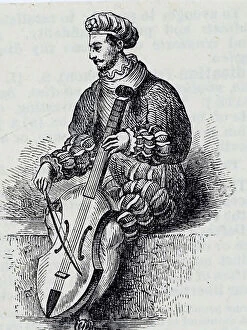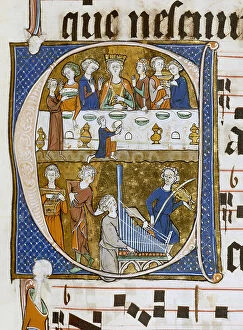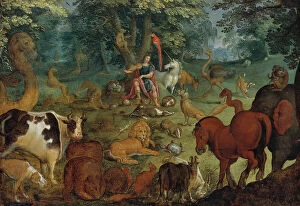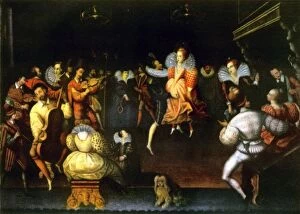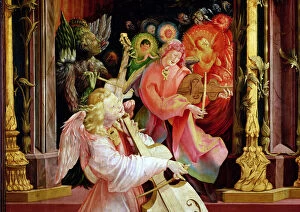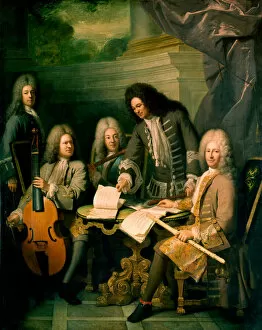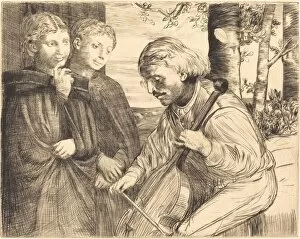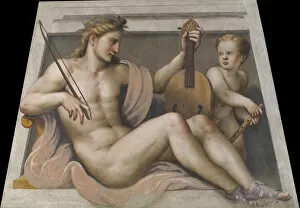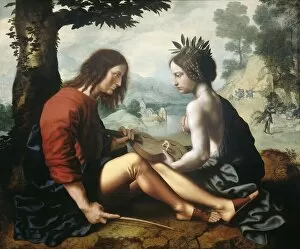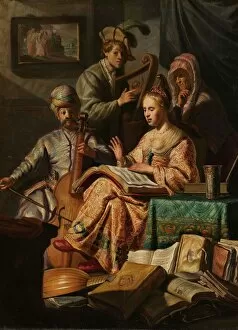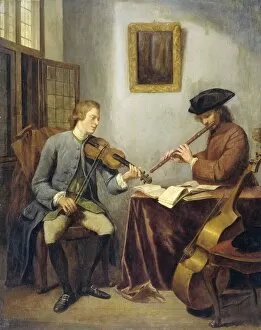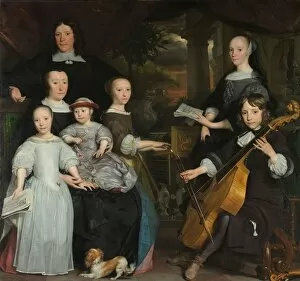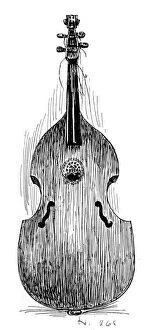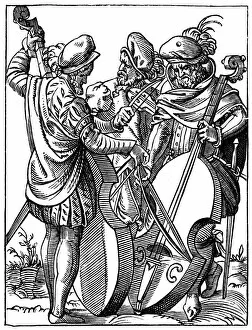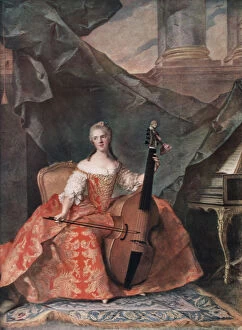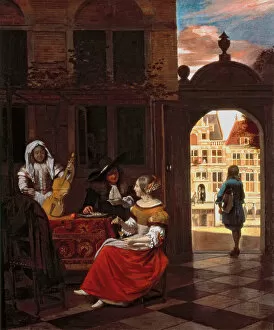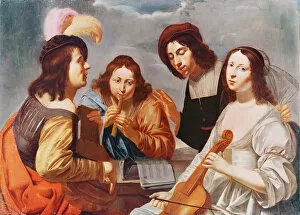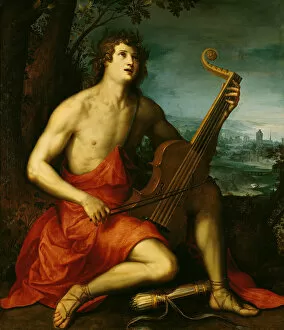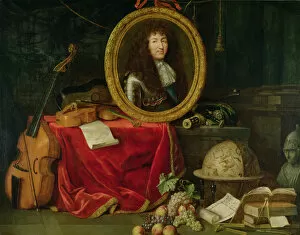Viola Da Gamba Collection
The viola da gamba, also known as the bass viol, has a rich and fascinating history in the world of music
For sale as Licensed Images
Choose your image, Select your licence and Download the media
The viola da gamba, also known as the bass viol, has a rich and fascinating history in the world of music. Dating back to the 16th century, this instrument has captured the hearts of musicians and artists alike. In Bernard Picart's painting "The Bass Viol Player, " we see a musician passionately playing his instrument. The artist beautifully captures the elegance and grace with which this player handles his viola da gamba. Another notable depiction is found in "Queen Elizabeth Dancing with the Earl of Leicester. " This artwork from 1581 showcases Queen Elizabeth I herself dancing to the enchanting melodies produced by a skilled bass viol player. It highlights how highly regarded this instrument was during that era. Giovanni Antonio Tagliente's work, "Essempio di recammi, " provides us with an insight into how these instruments were crafted during their early days. The intricate details showcased on page 12 verso give us a glimpse into the craftsmanship involved in creating such beautiful instruments. A portrait titled "Portrait of a Musician" painted between 1570-1590 shows an unidentified musician holding a viola da gamba. This painting serves as evidence that these instruments were not only cherished for their musical qualities but also admired for their aesthetic appeal. Moving forward in time, we encounter Matthias Grünewald's masterpiece, "Angel Musicians. " These angelic figures are depicted playing various musical instruments including what appears to be a small-sized bass viol. This inclusion emphasizes its importance even within religious contexts. "The Concert of Angels" fresco further exemplifies how deeply rooted this instrument was in religious artistry during the Renaissance period. Its presence among other heavenly beings signifies its significance as an instrument capable of producing celestial sounds. Jean-Baptiste Lully, one of France's most renowned composers and conductors, is often associated with promoting and popularizing the use of viols within orchestras during his time.


